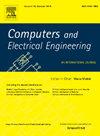3D pedestrian detection based on hybrid multi-scale cascade fusion network
IF 4
3区 计算机科学
Q1 COMPUTER SCIENCE, HARDWARE & ARCHITECTURE
引用次数: 0
Abstract
Improving pedestrian safety on the road is one of the essential tasks of autonomous driving. LiDAR-based intelligent perception systems can provide necessary guarantees for pedestrian safety in autonomous driving by accurately detecting pedestrians in real time. However, the detection performance suffers from the small-scale issue and blurred boundary of pedestrian point clouds. This work proposes a novel PillarHMCNet, which focuses on enhancing the feature representation of pedestrian point clouds to improve the 3D detection performance, tackling the issues mentioned above. Concretely, a Hybrid Encoder (HE) module is proposed to extract sparse and dense features of pedestrians through customized encoders, enhancing the feature representation of small-scale objects. Afterward, a Multi-scale Cascaded Feature Fusion (MCFF) module is introduced to fuse multi-layer sparse and dense features, improving the pedestrian contour representation. Finally, a dense head is used to conduct 3D detection based on the output of the MCFF module. Moreover, a direction-sensitive loss is leveraged to improve the model’s positioning accuracy by introducing the angle and distance-IoU (DIOU) losses. Quantitative and qualitative evaluations are conducted on the KITTI dataset, and in the detection of pedestrians and cyclists in 3D mode, our model outperforms PillarNet by 4.22% and 1.17%. The results verify the effectiveness and universality of the proposed method in intelligent perception of autonomous driving. The code will be available at https://github.com/CCZU-Myan/PillarHMCNet.

求助全文
约1分钟内获得全文
求助全文
来源期刊

Computers & Electrical Engineering
工程技术-工程:电子与电气
CiteScore
9.20
自引率
7.00%
发文量
661
审稿时长
47 days
期刊介绍:
The impact of computers has nowhere been more revolutionary than in electrical engineering. The design, analysis, and operation of electrical and electronic systems are now dominated by computers, a transformation that has been motivated by the natural ease of interface between computers and electrical systems, and the promise of spectacular improvements in speed and efficiency.
Published since 1973, Computers & Electrical Engineering provides rapid publication of topical research into the integration of computer technology and computational techniques with electrical and electronic systems. The journal publishes papers featuring novel implementations of computers and computational techniques in areas like signal and image processing, high-performance computing, parallel processing, and communications. Special attention will be paid to papers describing innovative architectures, algorithms, and software tools.
 求助内容:
求助内容: 应助结果提醒方式:
应助结果提醒方式:


